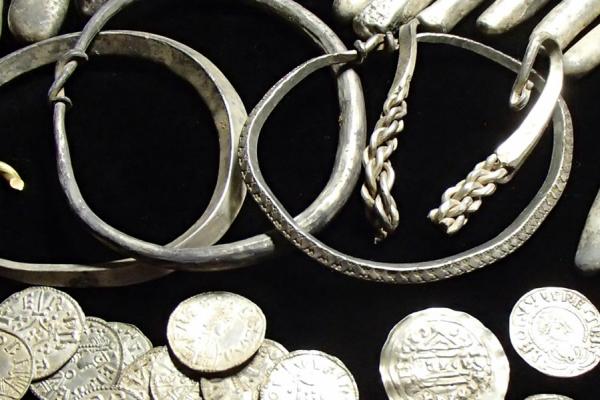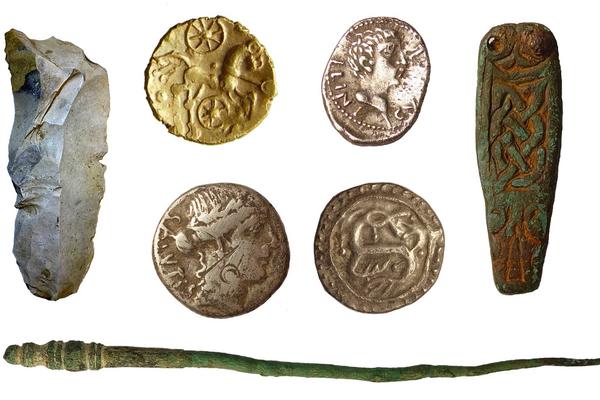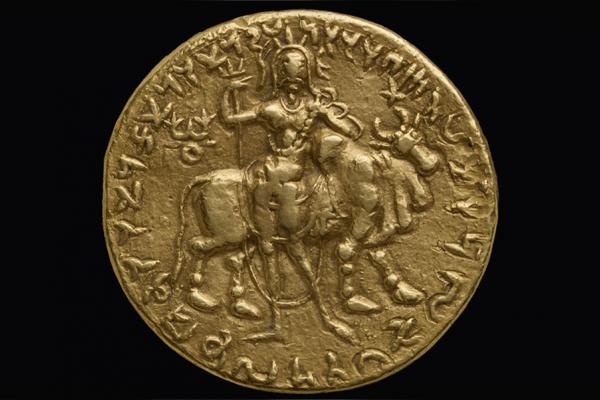PORTABLE ANTIQUITIES SCHEME
The Ashmolean's role in a national project recording archaeological finds discovered by the public.
The Portable Antiquities Scheme (PAS), run by the British Museum and National Museum Wales, encourages the recording of archaeological objects found by members of the public in England and Wales. Every year many thousands of archaeological objects are discovered, many of these by metal detector users, but also by people whilst out walking, gardening or going about their daily work. Finds recorded with the Scheme help advance knowledge of the history and archaeology of England and Wales.
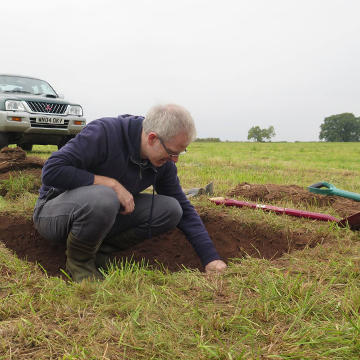
Dr John Naylor excavating with the Portable Antiquities Scheme on the site of an Iron Age hoard in Shropshire.
The Scheme has a network of county-based Finds Liaison Officers (FLO) who work with the public, often metal-detectorists, to record their discoveries. Alongside these FLOs are a group of specialists, known as National Finds Advisers (NFA), who provide expert advice, training and support for the FLO network.
The Ashmolean’s Heberden Coin Room has been home to the National Finds Adviser for Early Medieval and Later coinage since 2004 (a role held since 2007 by John Naylor, (right), covering coinage and numismatic-related items (such as tokens, jettons and medals) dating from the 5th century onwards. NFAs also undertake research on the finds recorded, promoting their work to both academic and public audiences.
John’s research has included the publication of the nationally-important Watlington Hoard (see below), acquired by the Ashmolean Museum in 2017, and the project ‘An Iron-Age to Post-Roman Landscape on the Berkshire Downs’, recording nearly 2,000 ancient artefacts found by metal-detectorists alongside work to investigate and understand the site and its landscape. He also regularly gives public talks and write a PAS column in the metal-detecting magazine 'Treasure Hunting'.
The Portable Antiquities Scheme in the Ashmolean
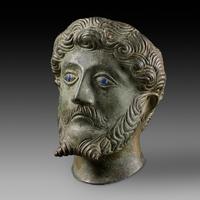
The vast majority of the finds recorded by the PAS are returned to their finders, but some do find their way into museum collections.
The Ashmolean has acquired a number of objects for its collections which were first reported to the PAS (some coming under the Treasure Act 1996). These include small everyday objects – coins and metalwork – but also items of archaeological and historical significance in their own right.
Important additions to the Museum’s collections include a bronze head of the deified Roman emperor Marcus Aurelius (r. 161–80, pictured right), which was probably mounted on a staff or pole and carried in religious processions. And two hoards: one found in Asthall (Oxfordshire) comprised 210 gold coins dating from the reigns of Henry VI–Henry VIII (1470–1547) and may have belonged to a wealthy wool merchant or have been buried during the Dissolution of the Monasteries. The other is the late 9th-century Watlington Hoard (pictured below right), a mix of Anglo-Saxon silver pennies and Scandinavian precious metal ingots and jewellery.

Important not only as the first large Viking-Age hoard found in Oxfordshire, the Watlington coins are also very rare examples of shared designs between Alfred the Great, king of Wessex (r. 871–99) and his Mercian counterpart, Ceolwulf II (r. 874–9), struck at the time that the Viking Great Army was raiding and conquering much of southern England, eventually defeated by Alfred’s army at the Battle of Edington in 878; it is likely that the Watlington Hoard is related to this event and its aftermath.
The PAS is one of the great success stories of British archaeology and heritage over the last two decades and the Ashmolean has played an important role in this. In providing opportunities for outreach, acquisition and research it has been a fruitful relationship for all.
Have you found an object? Here’s how to report it to the PAS
If you've found an object or a coin, it is important to report it to the PAS so that it can be recorded onto their database of finds.
Each one helps us to understand the past a little better, from individual parishes to England and Wales as a whole. The PAS focuses on objects dating from prehistory up to the 17th century but may record interesting finds of more recent date too. The network of FLOs ensure that there is a local officer who will be able to record your find. Their contact details can be found here.
Some objects will fit the criteria for ‘treasure’ under the Treasure Act 1996 and finders of such objects are legally required to report these within 14 days. The easiest way to do this is via your local FLO who will be happy to help. Full details of what constitutes ‘treasure’ can be found here, the advice including the following summary:
- Any metallic object, other than a coin, provided that at least 10 per cent by weight of metal is precious metal (that is, gold or silver) and that it is at least 300 years old when found. If the object is of prehistoric date it will be Treasure provided any part of it is precious metal.
- Any group of two or more metallic objects of any composition of prehistoric date that come from the same find.
- Two or more coins from the same find provided they are at least 300 years old when found and contain 10 per cent gold or silver (if the coins contain less than 10 per cent of gold or silver there must be at least ten of them). Only the following groups of coins will normally be regarded as coming from the same find: Hoards that have been deliberately hidden; Smaller groups of coins, such as the contents of purses, that may been dropped or lost; Votive or ritual deposits.
- Any object, whatever it is made of, that is found in the same place as, or had previously been together with, another object that is Treasure.
Note: An object or coin is part of the 'same find' as another object or coin if it is found in the same place as, or had previously been together with, the other object. Finds may have become scattered since they were originally deposited in the ground.



